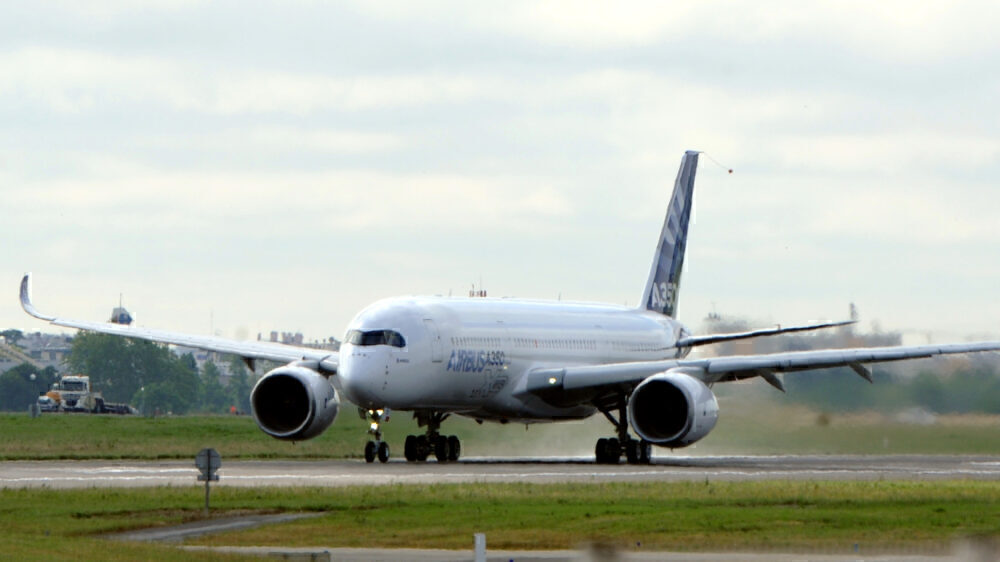If you look at photos and videos of aircraft conducting their initial test flights, you may see a little object tethered to the top of the vertical stabilizer. This object, known as a trailing cone (or static cone), almost looks like an oversized badminton birdie or shuttlecock. Indeed, it does have a key role to play in the test process. Let’s look at it in this article.

Measuring static pressure
When developing new aircraft, the trailing cone is fixed on to test jets in the early weeks of test flights and is there to measure static pressure or ambient atmospheric pressure. Thus, beyond trailing cone and static cone, some have also referred to it as a static pressure line.
When the line is reeled out in flight, AeronewsTV notes that the nylon cable is generally one to one and a half times the wingspan length or about 50 metres. This gets reeled in and is much shorter when the aircraft is on the ground, however.
Aviation International News gets a behind-the-scenes look at a test aircraft, including inside the cabin. Fitted with computer workstations for the development team, the aircraft shown in the video below also provides a brief glance at the line and reel from the inside of the aircraft. Appearing for just a few seconds at 1:48, the reel in the video is clearly about the same height as the passenger door it is situated beside and thus stands taller than most people.
In terms of an outside look, the trailing cone and its line can be seen quite well in Boeing’s 777X “first flight video” embedded below:
Stay informed: Sign up for our daily aviation news digest.
Calibrating sensors
A former flight test director at Airbus explains to AeronewsTV that getting an accurate read on the static pressure is necessary to measure the plane’s exact airspeed and altitude. “The static pressure is therefore fundamental to measure the performance of a test aircraft.”

When it is let out to its proper length, the object’s location is far enough behind the aircraft so that it can give a proper indication of the pressure away from the air flowing around an aircraft. Its presence gives the aircraft test team an idea of the difference in pressure between it and the pitot pressure at the front of the aircraft. This difference between the static pressure and pitot pressure helps to calibrate the airspeed measurements.
Advanced digital electronic air data computers make it possible for aircraft to correct for pitot-static “errors,” as veteran pilot Mac McLellan explains,
“Those errors can be caused by configuration change, such as extending the flaps, or flying at higher or lower altitudes, and faster or slower airspeeds. But the errors must first be documented in flight test and that’s why the static cone is so essential. The air data computers are terrific at correcting errors, but only after the errors themselves have been documented.” -Mac McLellan via Air Facts
Once the data is collected and analyzed, sensors can then be properly calibrated and adjusted. This, then, allows for the trailing cone to disappear.
Did you know notice this trailing cone before reading this article? Did you already know why it was there? Let us know in the comments.






